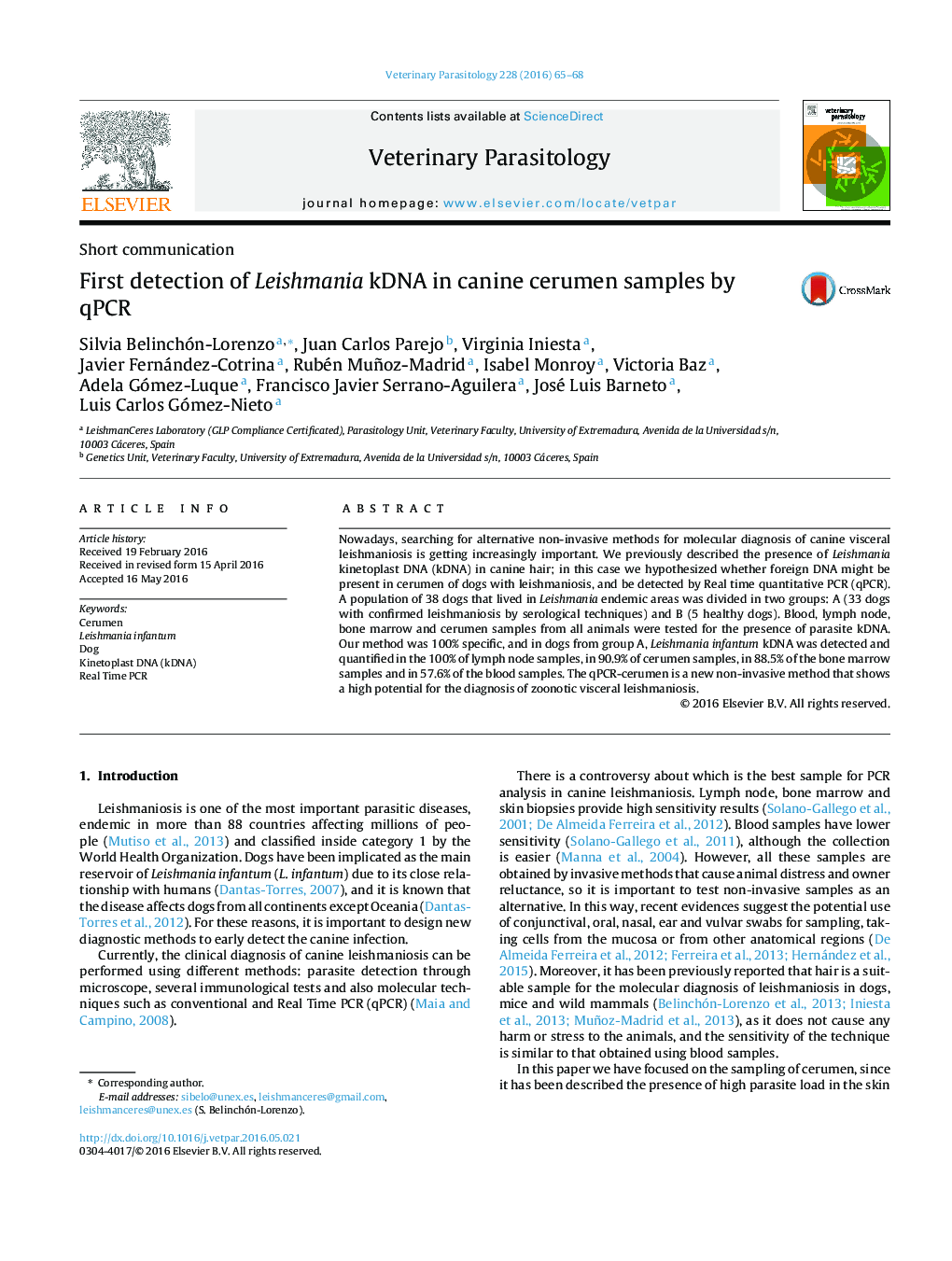| Article ID | Journal | Published Year | Pages | File Type |
|---|---|---|---|---|
| 5801977 | Veterinary Parasitology | 2016 | 4 Pages |
â¢Leishmania kDNA was detected for the first time in cerumen of dogs with leishmaniasis.â¢Sensitivity of cerumen was 90.9%, higher than blood and bone marrow.â¢The collection of cerumen is harmless, fast and easy.â¢Cerumen does not need specific conditions for transport and storage.â¢Cerumen-qPCR method has a great potential in the diagnostic of canine leishmaniosis.
Nowadays, searching for alternative non-invasive methods for molecular diagnosis of canine visceral leishmaniosis is getting increasingly important. We previously described the presence of Leishmania kinetoplast DNA (kDNA) in canine hair; in this case we hypothesized whether foreign DNA might be present in cerumen of dogs with leishmaniosis, and be detected by Real time quantitative PCR (qPCR). A population of 38 dogs that lived in Leishmania endemic areas was divided in two groups: A (33 dogs with confirmed leishmaniosis by serological techniques) and B (5 healthy dogs). Blood, lymph node, bone marrow and cerumen samples from all animals were tested for the presence of parasite kDNA. Our method was 100% specific, and in dogs from group A, Leishmania infantum kDNA was detected and quantified in the 100% of lymph node samples, in 90.9% of cerumen samples, in 88.5% of the bone marrow samples and in 57.6% of the blood samples. The qPCR-cerumen is a new non-invasive method that shows a high potential for the diagnosis of zoonotic visceral leishmaniosis.
